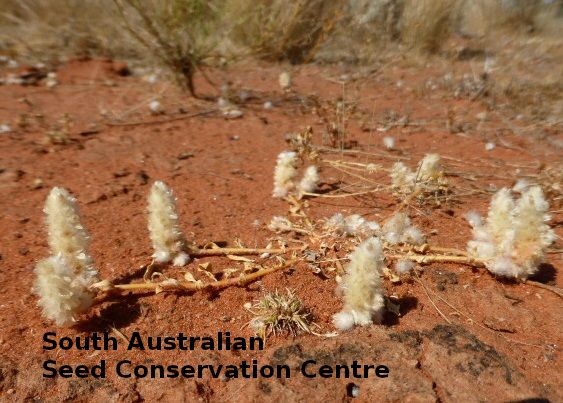
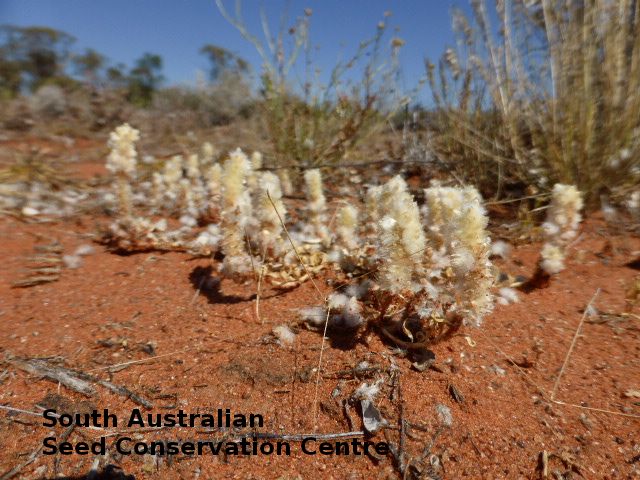
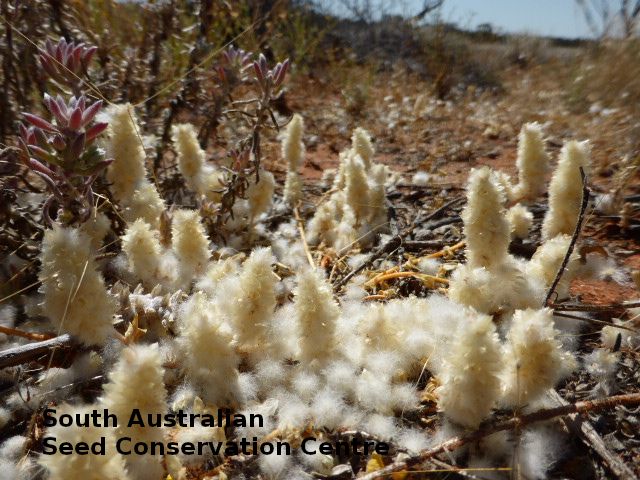
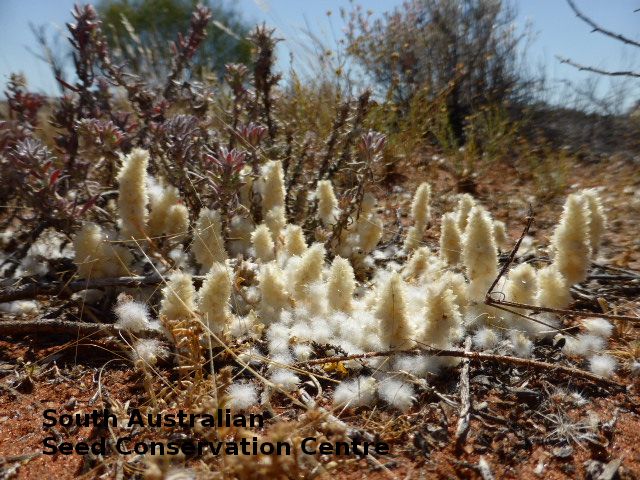
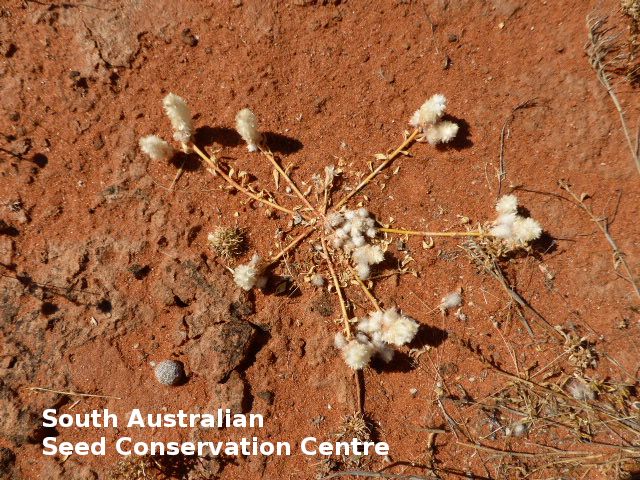
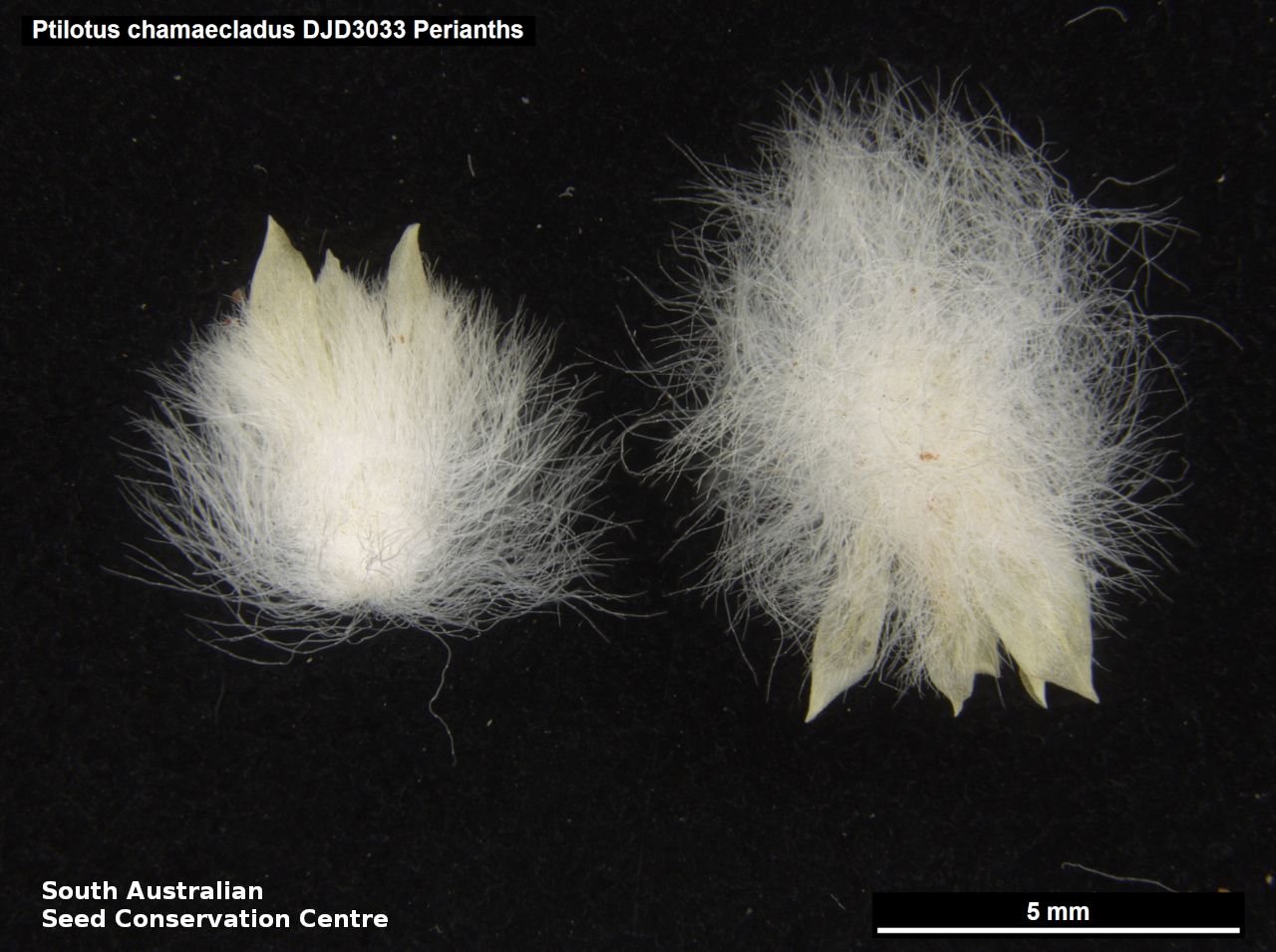
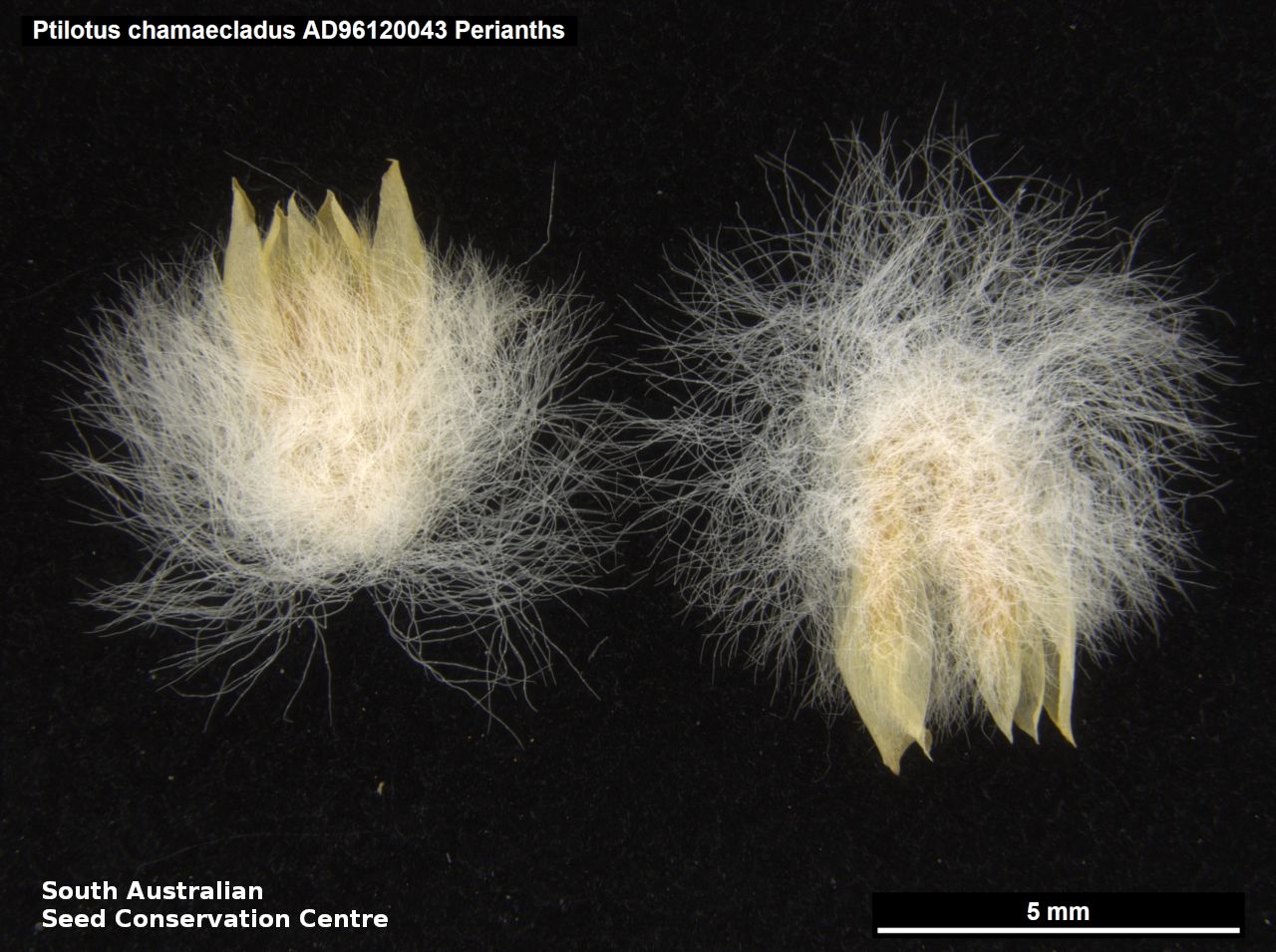
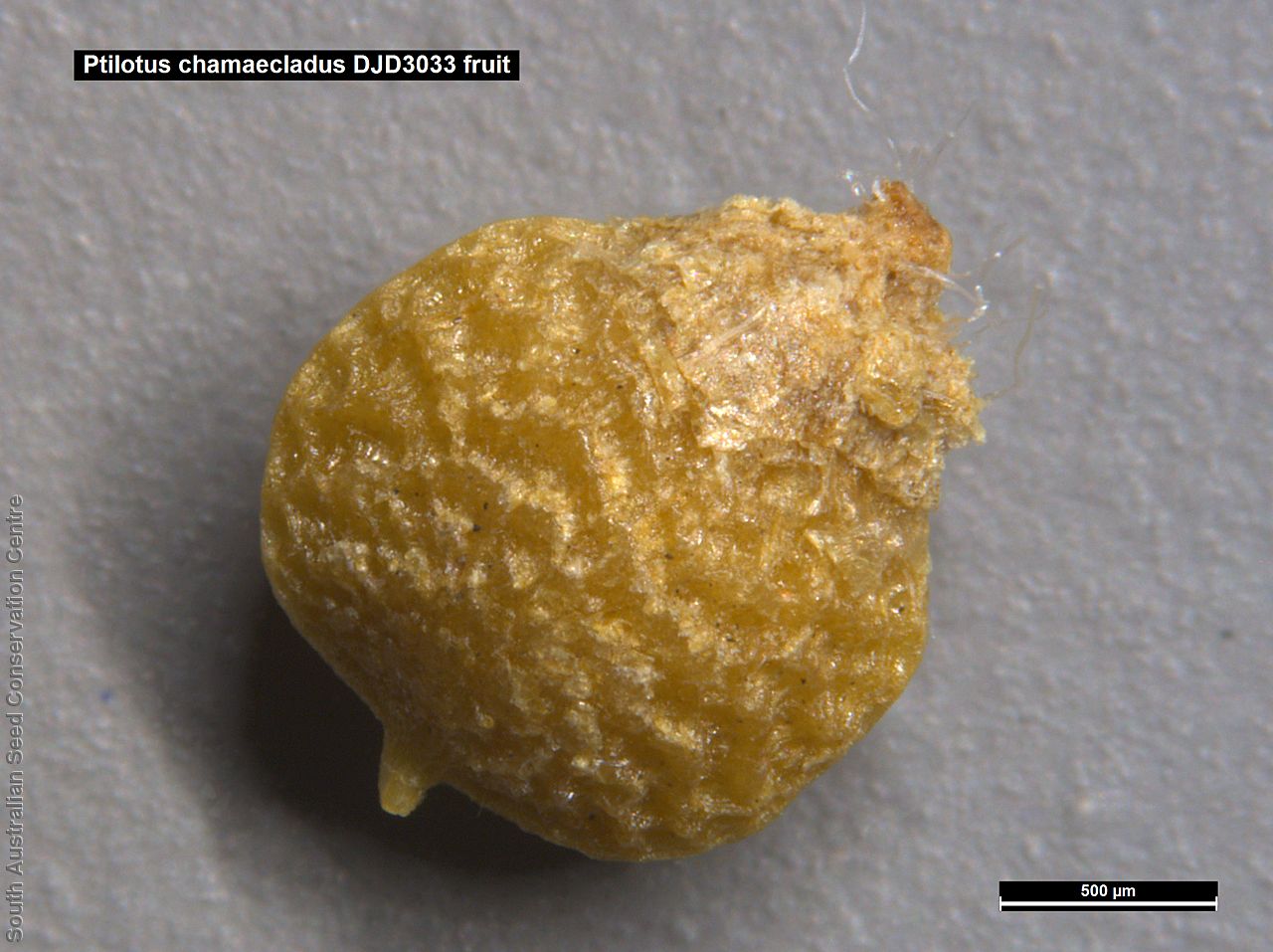
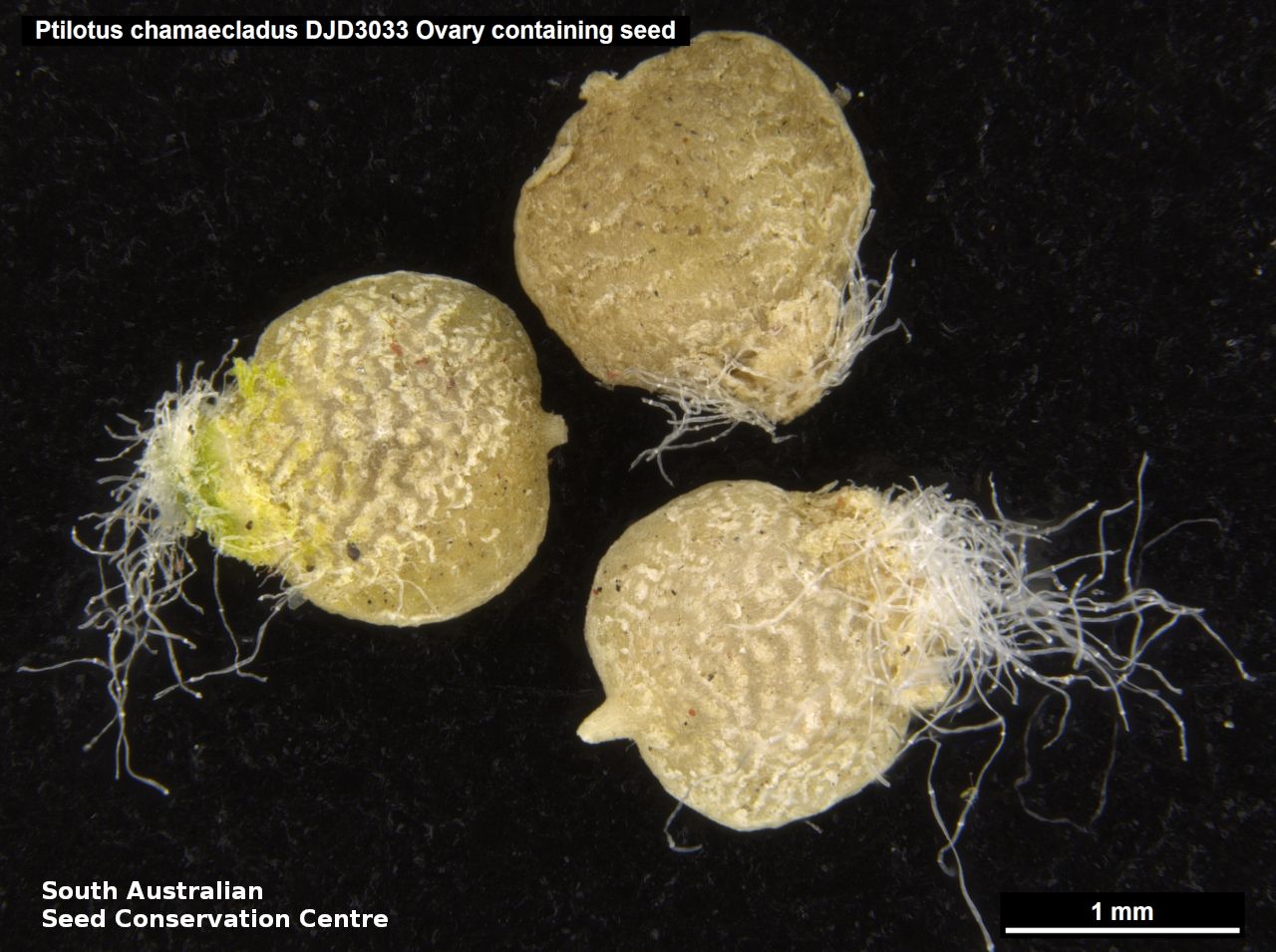
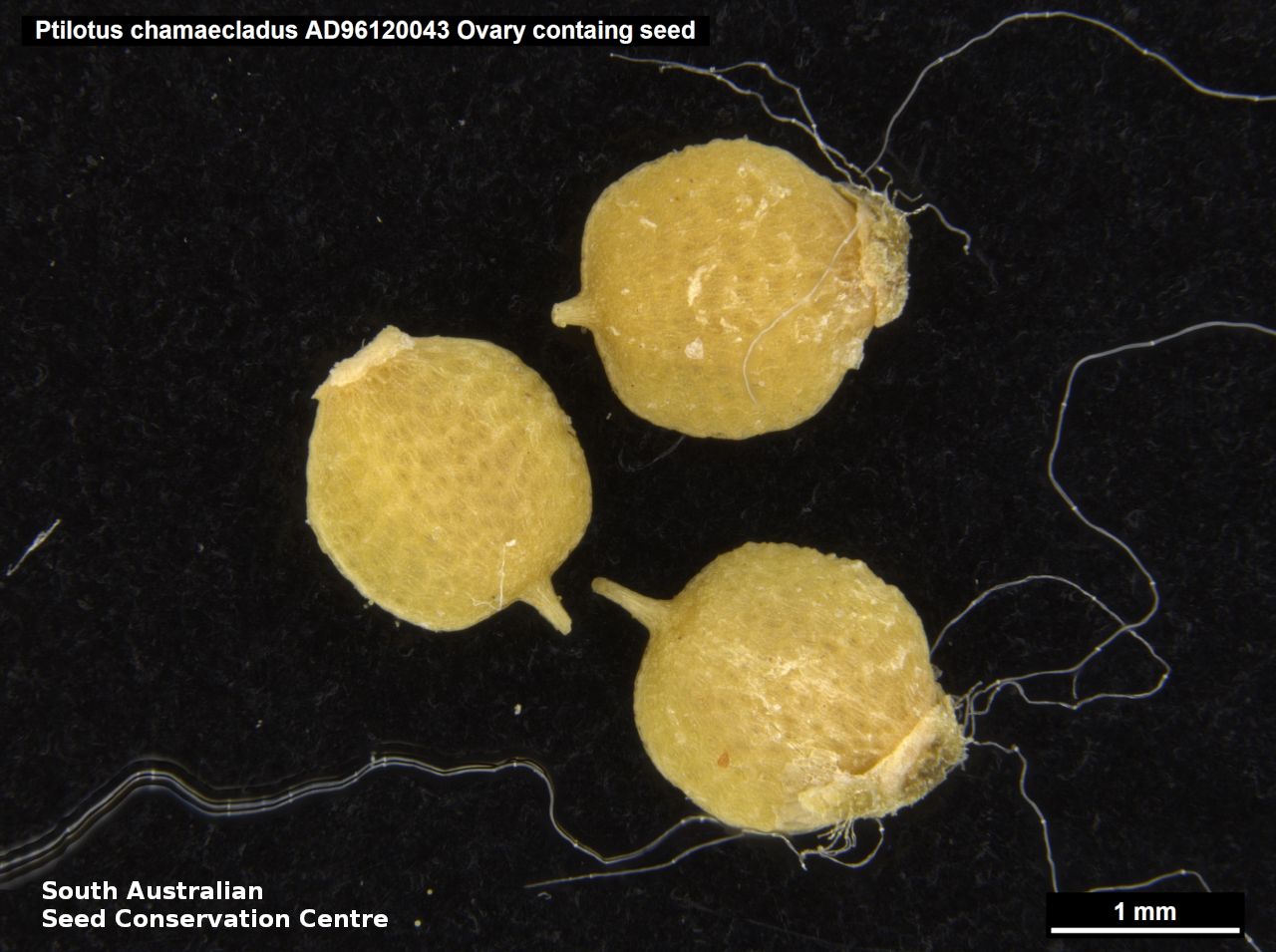
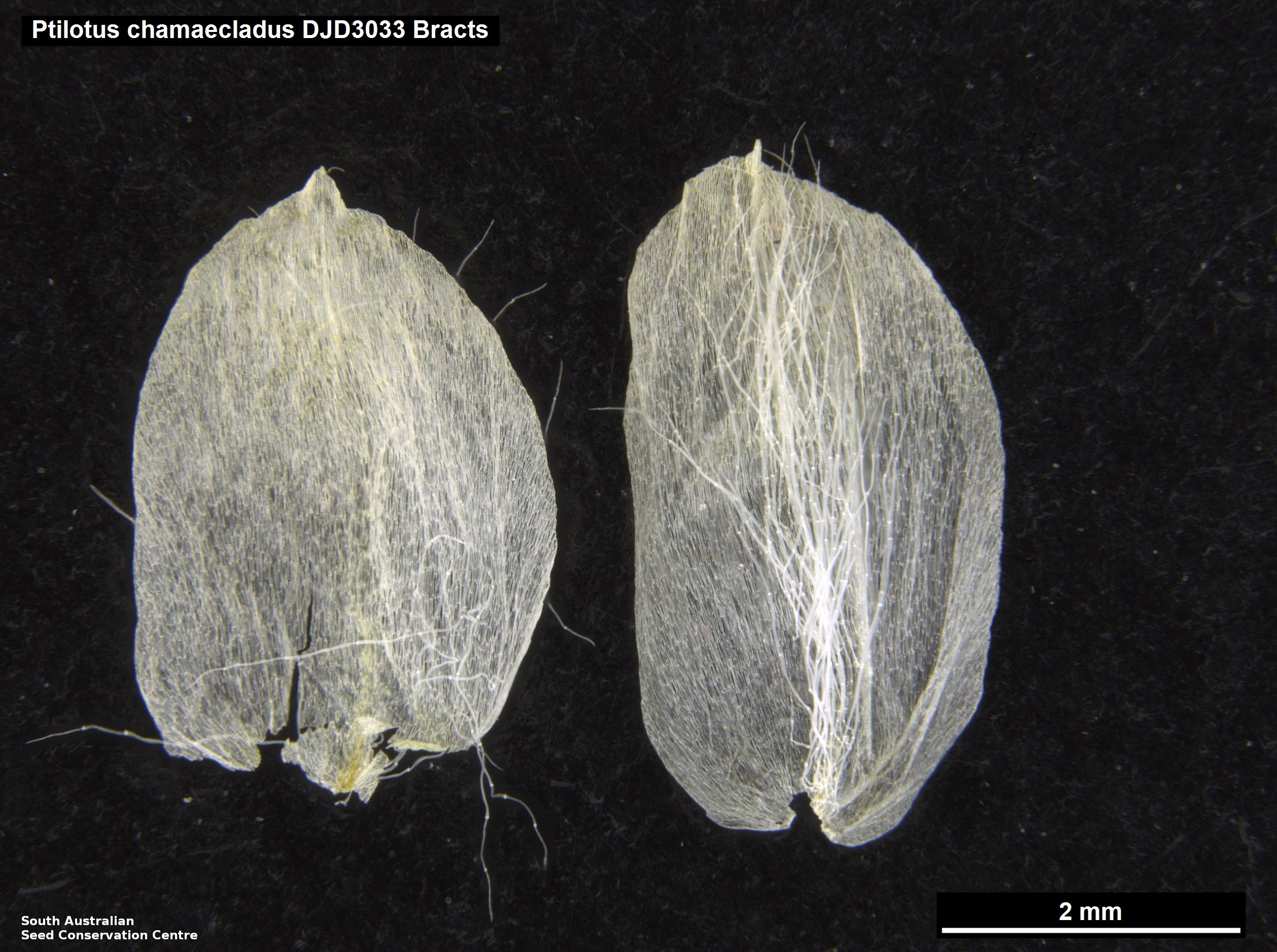
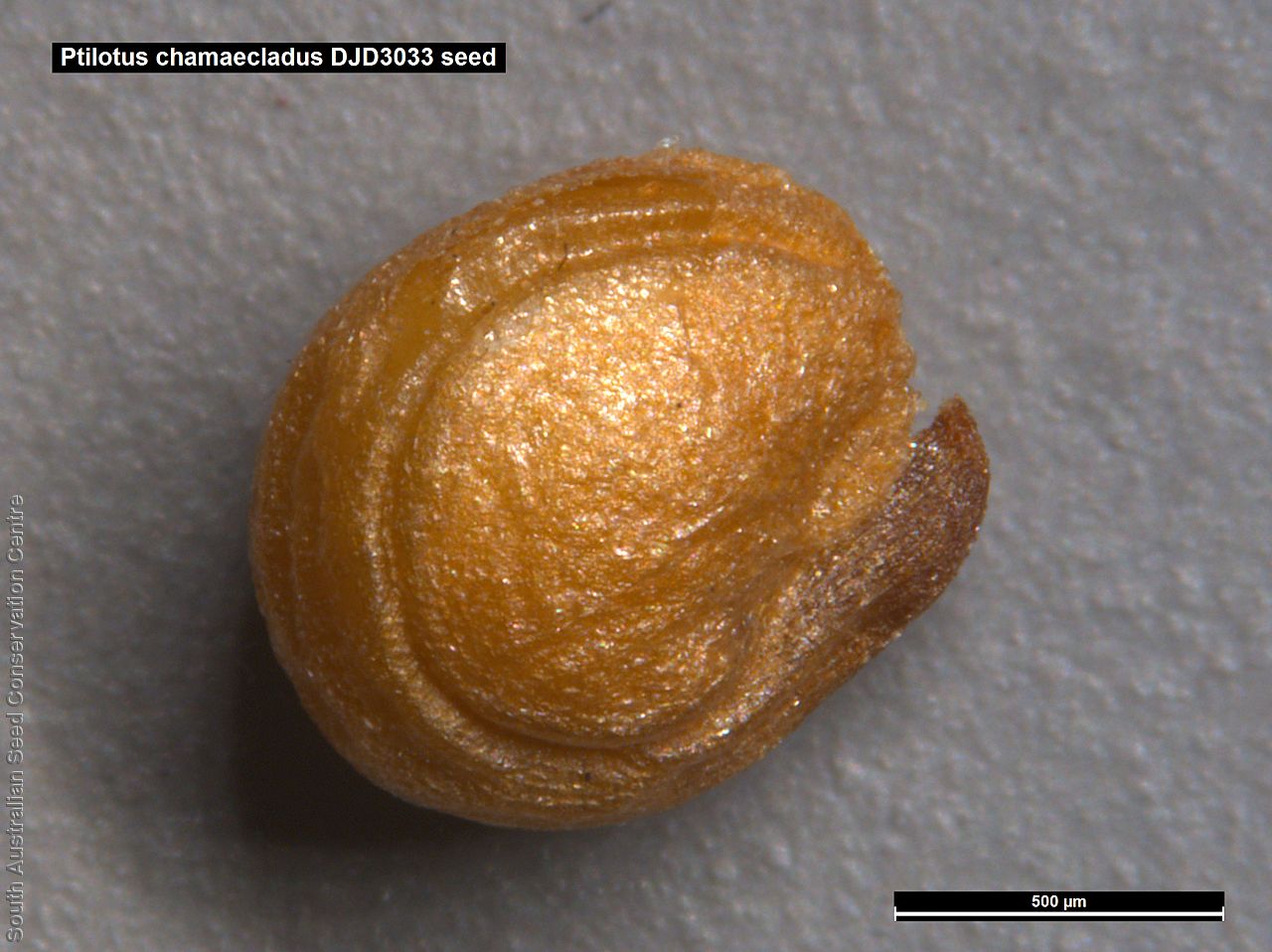
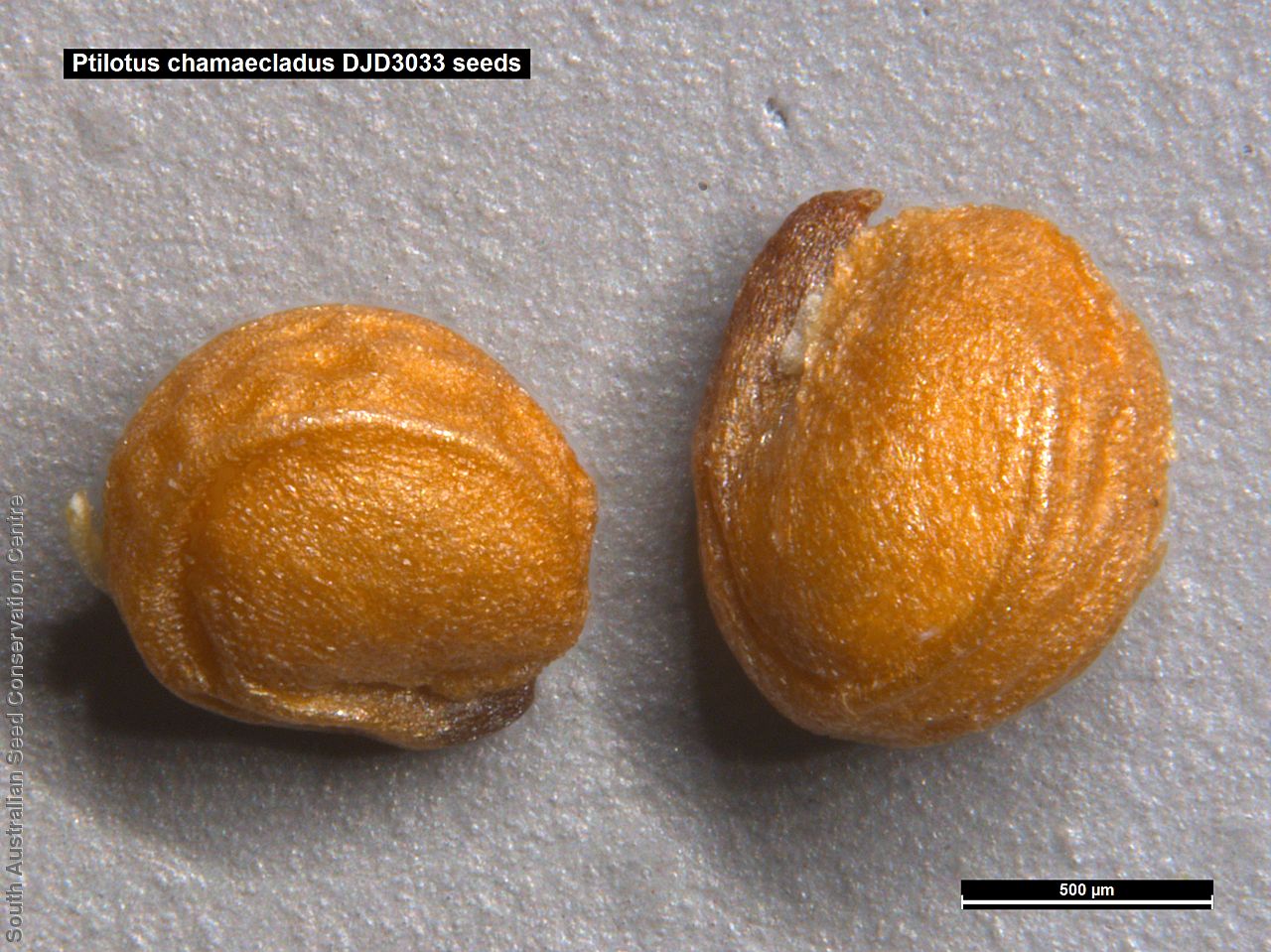

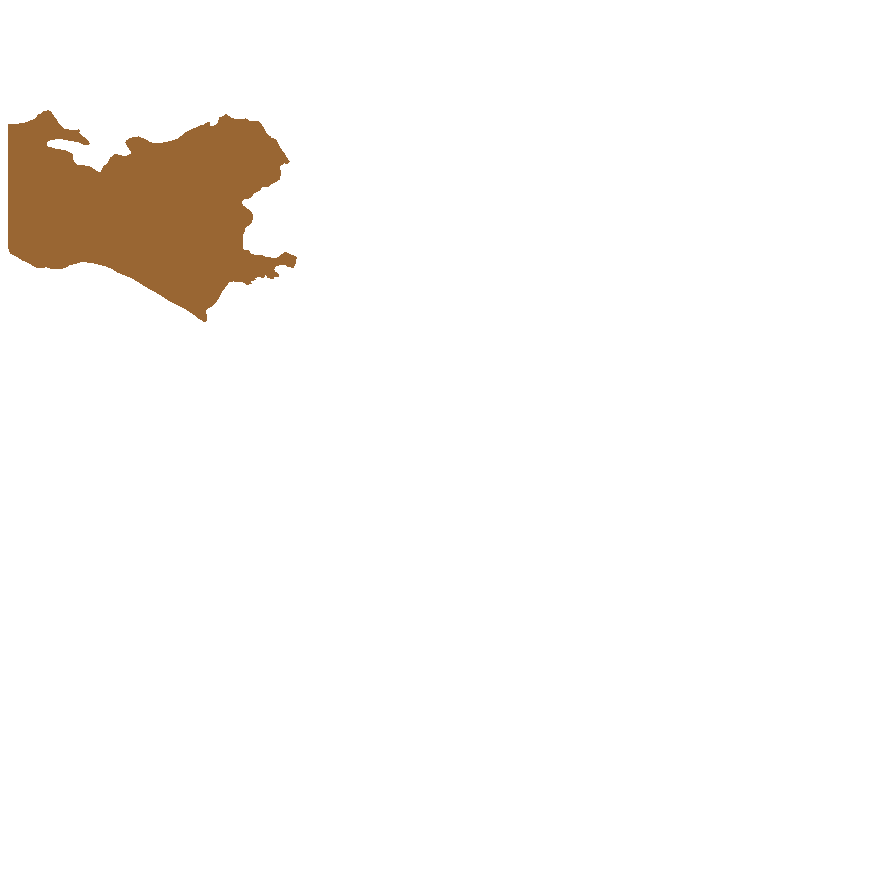
Etymology
Ptilotus from the Greek 'ptilotos' meaning feathered or winged; referring to the hairy flowers. Chamaecladus from the Greek 'chamai' meaning ground and 'klados' meaning branch; referring to its low growing habit.
Distribution and status
Few records collected from the western part of South Australia at Serpentine Lakes, growing on clay, loam and alluvium soils in floodplains, creek beds and claypans. Also found in Western Australia. Native. Rare in South Australia. Common in Western Australia.
Herbarium region: North Western
NRM region: Alinytjara Wilurara
AVH map: SA distribution map (external link)
Plant description
Prostrate spreading to ascending annual herb to 5 cm high and 60 cm wide. Leaves ovate, to 130 mm long and 48 mm wide. Inflorescence ovoid, to 60 mm long and 20 mm wide with white-pink-red flowers covered in dense hairs. Flowering between July and December. Fruits are ovoid head containing numerous long papery and hairy fruits, each containing one seed. Seeds are light brown, globular-reniform to 1.2 mm long and 1 mm wide. Seed embryo type is peripheral.
Seed collection and propagation
Collect seeds between September and January. Be very careful when collecting this species as the fruits contain fine hairs that may cause an allergic reaction for some people. Collect the fruit heads when dried to a pale straw colour. Each fruit should come off the head easily when fingers are rubbed up the stem. Collect more fruits than required as not all fruits will have a viable seed. Be very careful when cleaning this species as the fruits contain fine hairs that may cause an allergic reaction for some people. To clean, rub the fruit heads gently to dislodge the seed at the base of each fruit. Use a sieve to separate the unwanted material. Store the seeds with a desiccant such as dried silica beads or dry rice, in an air tight container in a cool and dry place. Seed viability is usually high but seed availability tend to be low. Seeds are non-dormant, viable seed should germinate readily.
| Location | No. of seeds (weight grams) | Number of plants | Date collected | Collection number Collection location | Date stored | % Viability | Storage temperature |
|---|---|---|---|---|---|---|---|
| BGA MSB | 7,500 (16.1 g) 7,500 (16.13 g) | 100+ | 21-Sep-2014 | DJD3033 North Western | 1-Jan-2016 | 65% | -18°C |
Number of plants: This is the number of plants from which the seeds were collected.
Collection location: The Herbarium of South Australia's region name.
% Viability: Percentage of filled healthy seeds determined by a cut test or x-ray.